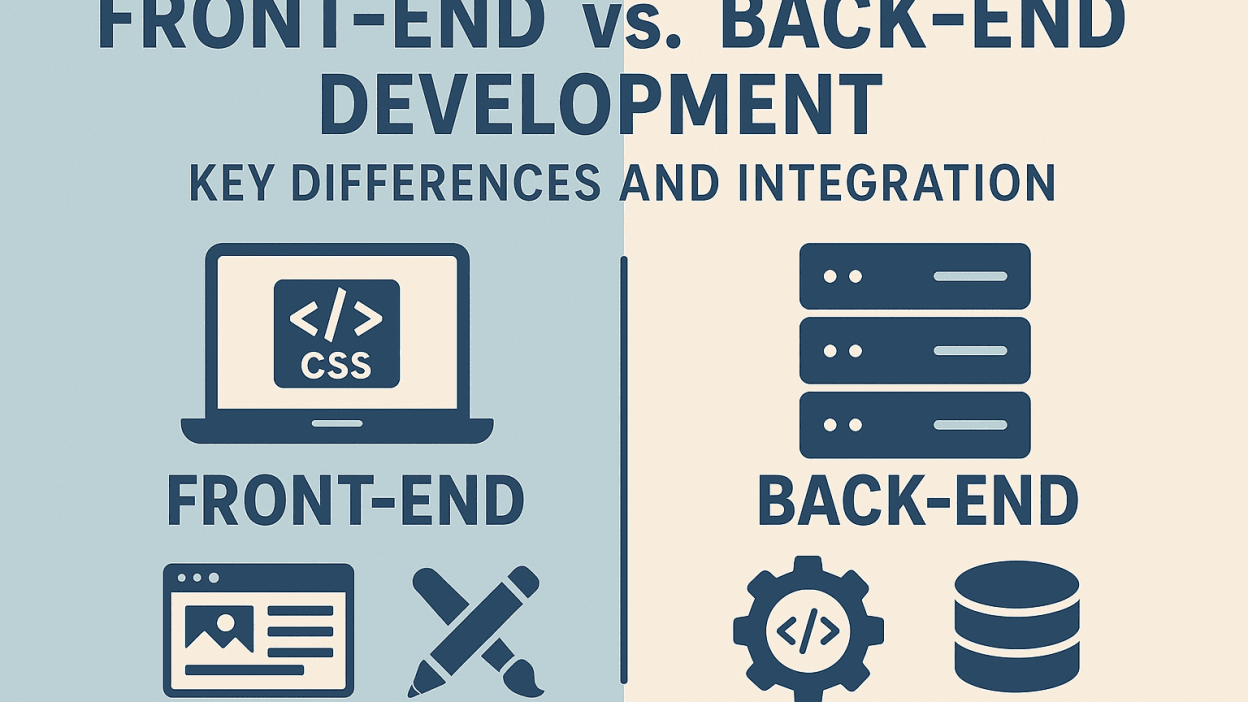Modern software development relies on two fundamental components: front-end and back-end development. While these domains serve different purposes, they work together to create functional applications. This overview explores their distinct roles, technologies, and responsibilities, as well as how full-stack developers unify them for complete solutions.
Front-End Development: The User-Facing Side
Front-end development focuses on building the visual and interactive elements that users experience directly, often called the “client side.” Developers in this field ensure applications are visually appealing, responsive, and accessible across devices.
Core Technologies
- HTML (Hypertext Markup Language): Structures web content.
- CSS (Cascading Style Sheets): Controls layout, typography, and styling.
- JavaScript: Enables dynamic features like animations and form validation.
- Frameworks/Libraries: React, Vue.js, and Angular streamline development.
Key Responsibilities
- Responsive Design: Optimizing layouts for different screen sizes.
- Accessibility: Ensuring usability for people with disabilities.
- Performance Optimization: Improving load times and smooth interactions.
- Client-Side Security: Protecting against vulnerabilities like XSS attacks.
Back-End Development: The Server-Side Logic
Back-end development powers the behind-the-scenes functionality, managing data processing, storage, and server operations that enable front-end features.
Core Technologies
- Programming Languages: Python, Java, Ruby, C#, Node.js.
- Databases: SQL (PostgreSQL, MySQL) and NoSQL (MongoDB).
- Server Management: Cloud platforms (AWS, Azure) and containerization (Docker).
Key Responsibilities
- API Development: Building interfaces for front-end and third-party services.
- Database Management: Storing, retrieving, and securing data efficiently.
- Server Optimization: Ensuring uptime, scalability, and fast response times.
- Authentication & Authorization: Managing user access securely.
Shared Development Responsibilities
Both front-end and back-end developers collaborate on:
- Writing and maintaining clean, efficient code.
- Testing (unit, integration, end-to-end) to ensure reliability.
- Debugging and troubleshooting issues.
Despite overlapping tasks, their focus differs—front-end prioritizes user experience, while back-end ensures robust server functionality.
Full-Stack Development: Bridging Both Worlds
Full-stack developers handle both client and server-side development, enabling end-to-end application building.
Integration Process
- Planning: Defining requirements and architecture.
- Development: Building UI components and server logic in parallel.
- API Connectivity: Linking front-end interfaces with back-end services.
- Testing & Deployment: Ensuring seamless functionality before launch.
Advantages of Full-Stack Expertise
- Faster prototyping and problem-solving.
- Better collaboration between teams.
- End-to-end oversight of performance and security.
Front-end and back-end development serve unique but interdependent roles in software creation. Full-stack developers merge these disciplines, delivering cohesive applications that excel in both user experience and technical performance. Understanding both domains is crucial for building modern, scalable, and efficient digital solutions.



